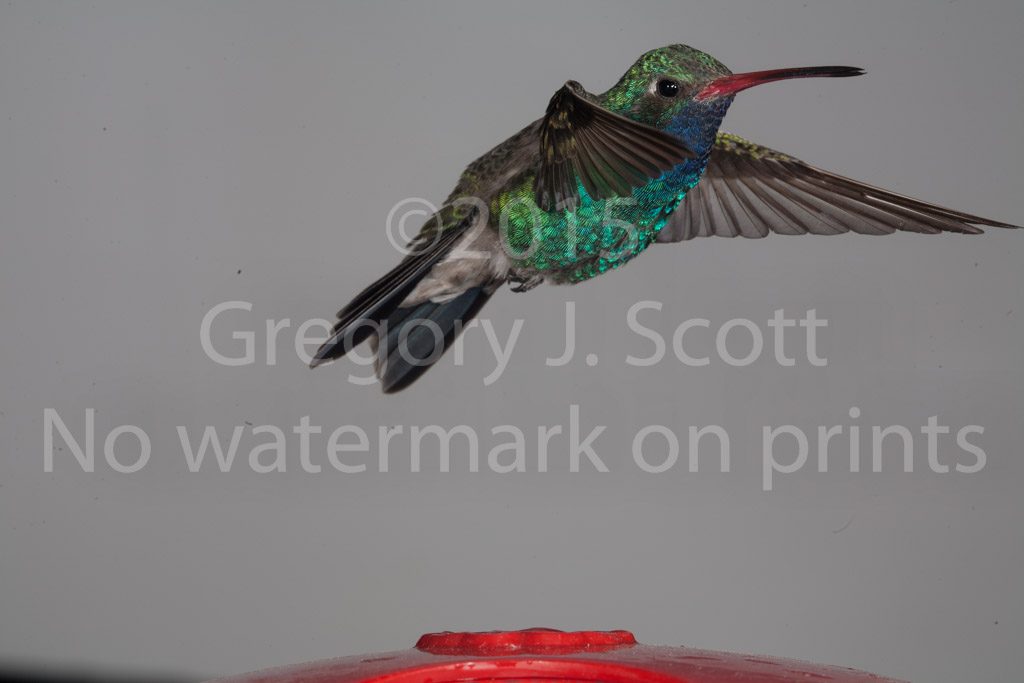One Hour of Unedited Hummingbird Photography: Technique and Methods
Click the large image once to see it larger, and click yet again to see it at FULL resolution! But don't forget to read the caption UNDER is page to get all the technical info.
In the zone!

This male broadbill is right where I want him. Note that because he is not facing me, but in profile, that the whole bird is in good focus, even though I'm only at F16. These days, I would be at F22, and bump the ISO correspondingly. To evaluate focus, the most important point to have tack sharp is the eye. Psychologically, if the eye is tack sharp, the image as a whole is perceived to be sharp. This applies to most portraiture. In this case you can not only clearly see the eyelashes, but DETAIL on the eyelashes (orbital feathers.) Getting close, using a macro lens, and using a flash to minimize otion blur are what explain the extreme sharpness here. Note the four flash head reflections in the eye. Normally I would edit out 3 of them, and perhaps soften the remaining reflection for a slightly more natural looking image. Eyes are very important, as I said. You can see that the tip of each feather is a radial cluster of featherlets, forming a scalloped shape, which is not irridescent at the tip, but which has maximum brightness near the tip. In this particular species, the irridescence is seen at virtually every angle. On most hummingbirds, the irridescence is more directional. Most species seem to know what angle to turn to make the brightest irridescence appear to a viewer, and they do this for mating and territorial displays. In general for photography, with most species, if the light is about 20 degrees from the camera lens center line, the brightest irridescence will be seen. This rule does not seem to work as well for the species Magnificent, particularly if you want to get both colors of irridescence. In such a case, you need to have the camera higher than usual, bisecting the angle between gorget and crown, or perhaps a bit higher. It's relatively difficult to capture the crown irridescence.